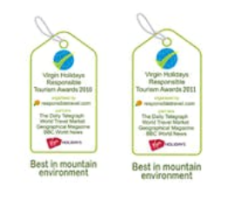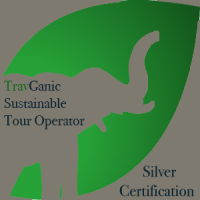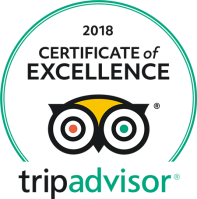How to spend two days in Kathmandu
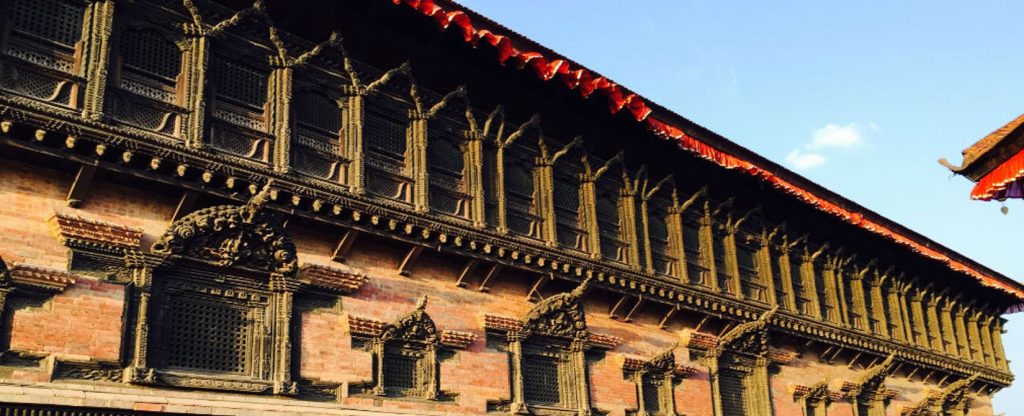
Some fun ways to spend 48 hours in Kathmandu, Nepal Adventurers come to Nepal from all over the world. Almost all Nepal trips involve spending time in Kathmandu before your adventures. You can spend time exploring ancient monuments, Royal Palaces, and the maze of streets. Kathmandu is known for being overcrowded with heavy traffic, dust, and pollution. Yet, there is grace beyond all the madness. Kathmandu is home to some of the most charismatic shrines in the narrow streets, ancient temples, along Buddhist Stupas that have earned World Heritage Site status. Get your bearings Kathmandu Durbar Square, the old city, is in the heart of Kathmandu. Thamel, the central tourist district’s maze of shops, hotels, restaurants, and trekking agencies, is north of Kathmandu Durbar Square. The Bagmati River borders Kathmandu and Lalitpur districts to the south. Lalitpur means the city of fine arts, great for great artwork, wood carvings, paintings, and handmade statues. The up-market shopping centres and foreign embassies lie in the city’s eastern part. Bhaktapur Durbar Square, a living museum, lies 13 km east. It is an exciting place where you can easily spend half a day wandering around the maze of ancient streets. You can get around by walking, hiring a bike, taxis, rickshaws, feeling adventurous, and going on a local bus. Day 1: Walking tour of Swayambhunath Stupa and Kathmandu Durbar Square. You can take a taxi to the bottom of the stupa and walk up the 400 steps to Swayambhunath Stupa, also known as the Monkey temple, because of the Rhesus’ sheer presence of macaques. You can get a great view of the sprawling Kathmandu valley. The climb up the stairs makes it a worthwhile trip to this 5th-century monument. The entrance is approximate $3.00. You can walk down the steps and head towards the Kathmandu Durbar square via the back streets of Kathmandu, which can quickly take you back a couple of centuries. This world heritage site has palaces, shrines, and temples built between the 12th and 18th centuries. You can mingle with the flower sellers, hawkers peddling souvenirs, other tourists, and orange-clad Sadhus or hermits. The entrance ticket is about $10. Next, you can walk towards Thamel via Ason, the old spice market on the crowded narrow streets with numerous shops, and have lunch at Thamel. Try out the local cuisine of momo – steamed or fried dumplings with meat or vegetable fillings. Retail Therapy There is a lot of shopping in Kathmandu; it is a shopper’s paradise. You can buy anything from prayer flags and singing bowls to wooden sculptures to hand-painted Thangkas. Thamel has many shops selling cheap locally manufactured or international brands of trekking gear. It is also great for buying music or movie DVDs and books. Dinner with Cultural Shows There is Thamel house for an evening of cultural show and Nepalese meal, or you can take a short 15-minute walk towards Jai Nepal movie hall to Utsav Restaurant. They hold daily cultural performances, and you can have a set Nepalese dinner for around $15. The cultural show presents dances from various ethnic groups of Nepal. The meal is quite an elaborate spread. Day Two: Mountain Flight The one-hour mountain flight in a turboprop aircraft is considered one of the world’s best scenic flights. Buddha Air and Yeti airlines operate this early morning from the domestic terminal of Tribhuvan international airport. The current airfare is US$190. If money is no object, you can charter a helicopter and fly above Everest base camp, stop for a few minutes at Kalapathar 5400meters to take photos, and pass down to Kongde ridge for a champagne breakfast at the highest resort in the world for an experience of a lifetime. This costs $8000 to be shared by up to 6 persons. Great breakfast option. You can take a taxi to the legendary Mike’s breakfast. It is an institution and is very well known in Kathmandu. There is a great variety of American and Mexican breakfasts on the menu. Don’t forget to try the ultra-delicious Eggs Benedict and their great pancakes. Boudhanath Stupa Boudhanath Stupa used to be the world’s largest stupa and is still one of the biggest. You can witness pilgrims and tourists going around the stupa in a clockwise direction. You can also hear the Buddhist chant of Om Mane Padme Hung being played by the numerous music shops. Thus, you can enjoy peacefulness just a few meters away from the chaos of the city. The entrance fee is $2. Souvenir shopping Now is the time to go crazy shopping for gifts and souvenirs you have been eyeing since your arrival. Shop till you drop and help the local economy! Pubs and Bars Thamel is a great place for bar hopping in the numerous pubs, and the nightlife there is vibrant. You can try Sam’s bar, or if you happen to be there on Tuesdays or Fridays, visit the House of Music behind Hotel Malla. HOM holds open mike on Tuesdays, and they have live cover bands on Fridays. Sometimes they also host touring international bands. Dining with the locals There are so many dining options in Kathmandu. Try the pizza at Fire and Ice or Italian at the Alchemy, Korean, or Japanese, or if you feel lazy, you can order takeaway from Foodmandu.com. You can also experience fine dining at the Chimney Restaurant. In Conclusion You will wonder where the 48 hours flew and made you ready for a more extended visit to Nepal soon.
Am I too old to go trekking in the Himalayas?
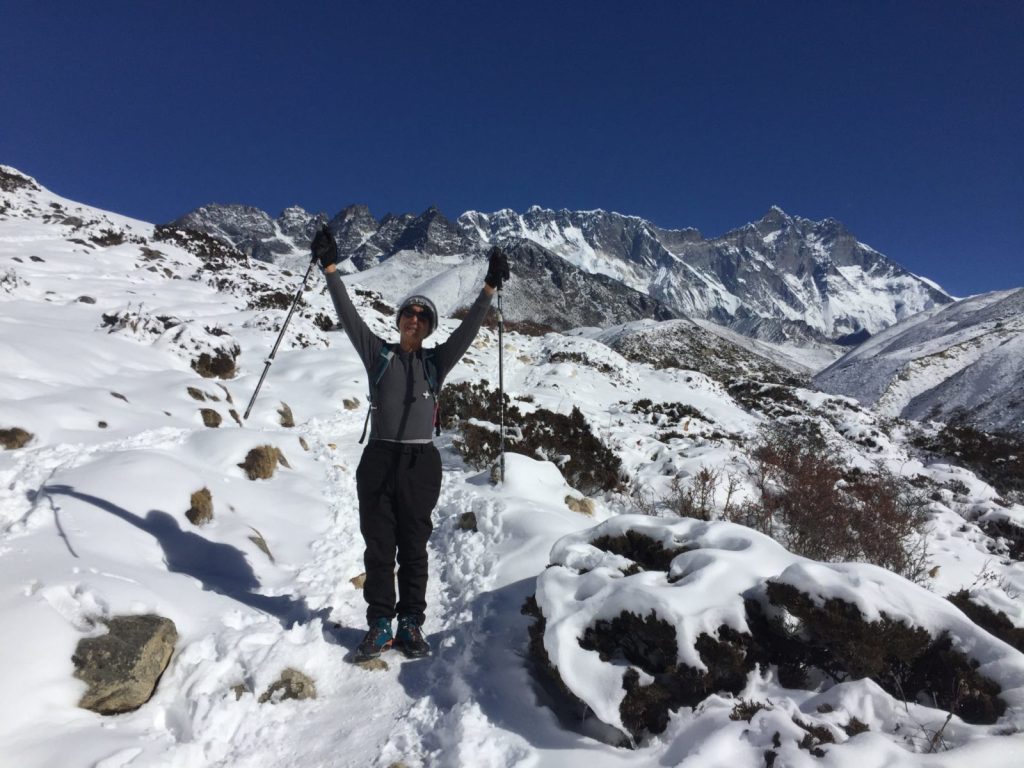
It is a great healthy lifestyle if you have been hiking/trekking or any form of exercise. However, if you haven’t already done it, you are not the only one!
How to choose the right partner or partners for a trekking vacation
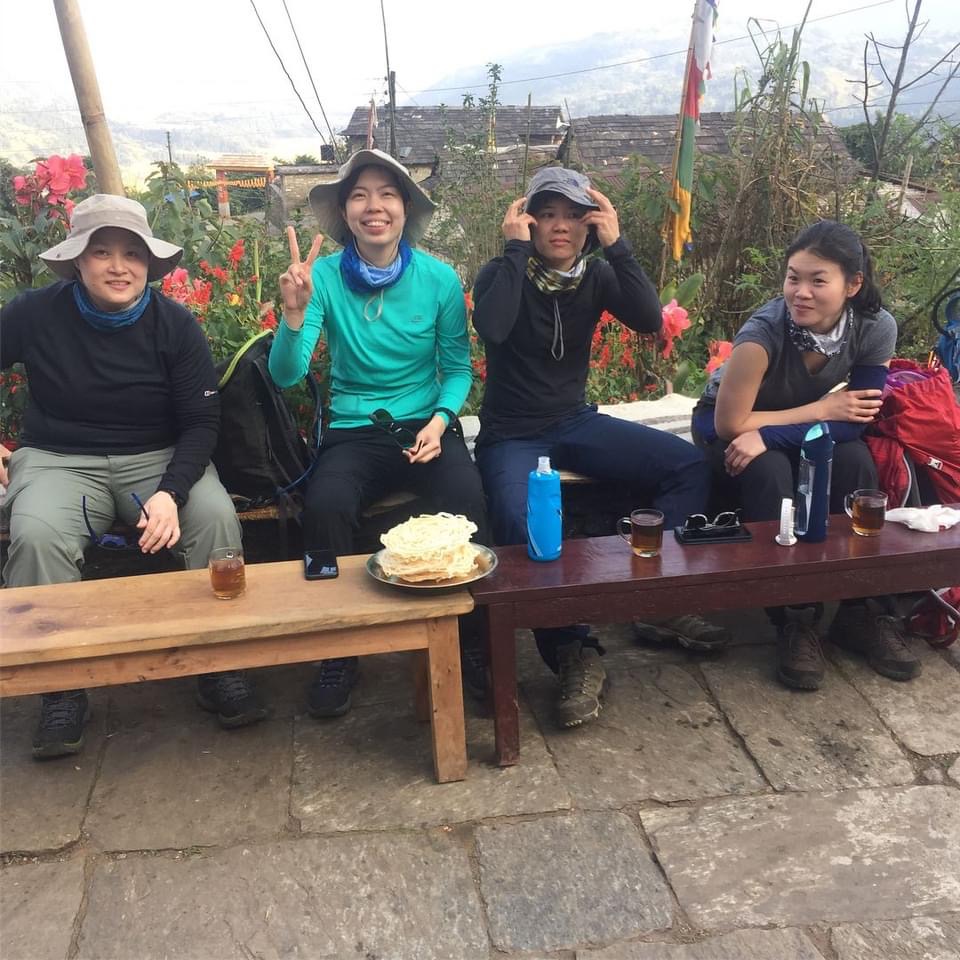
How to choose the right partner or partners for a trekking vacation. Trekking is an adventurous activity, and it can be memorable if the right trekking partner or partners accompany you. The right trekking partner can be an essential part of your trekking experience. It would be best if you had a reliable, competent, and trustworthy trekking partner in a risky situation in the mountain environment. Here are some of the ways to find the right trekking partner and have an excellent trekking partnership. Ideally, if you have someone with whom you have been on extended hiking trips before and have gotten along well in the past, fantastic! However, you could still meet a new person with matching thoughts and ideas and end up having a partner in adventure for life. 1. Knowing Yourself The first step is to understand yourself: You need to know what you intend to achieve, your expectations, and your trekking partner; complete compatibility is essential. Check if your personalities, expectations, preferred routes, and budget match. Get a feel for your trekking partner’s personality and ask yourself if you are comfortable with it. While doing so, put yourself in their shoes and see if you are an excellent trekking partner for them as well. This should help you understand what you want in a partnership while trekking in a serene mountain environment. 2. What you seek in your trekking partner It is critical to know your partner/s before going on the trek with them. One suitable way is to look at their social media pages to learn more about their activities, personalities, likes, etcetera before embarking on a trekking vacation. i) Age and fitness Well, age should not be a critical criterion in deciding the compatibility of your trekking partnership. However, it would be best to consider their physical fitness, their hiking experience, and their expectations of the trekking pace. The partner’s speed and physical fitness can be a factor that determines the trekking route and the number of trekking days you choose. Having said this, trekking at your own comfortable pace alone can be a self-discovering experience. You can contemplate in silence while admiring the beauty of nature while hiking on your own. You could even do a meditative walk on your hiking vacation. ii) Gender Having the opposite sex as a trekking partner should not be too inconvenient, as long as you have mutual respect, personal space, and privacy to change clothes, etcetera in the room or tent. If you snore, inform your partner to invest in a pair of earplugs. iii) Hiking Experience If your trekking partner is experienced, it can be advantageous for you to guide trek preparation. Talk about each other’s experiences, strengths, and weaknesses. d) Nature of your partner What do you like doing, e.g., do you want to have a quiet read or listen to music in your free time while taking in the surrounding mountains’ beautiful scenery? What if your partner is a party animal and loves hanging out late every night during the trek? Everyone is different, and that should not be too much of a problem as long as they do not disturb you when they return to the room. Invest in earplugs, as some people tend to snore after a few drinks, and the walls of the lodges can be paper-thin. e) Trekking Partner’s expectation Ask and understand what they expect from you and check to see if it is compatible with your plans and expectations. If the expectations match, this could be the beginning of a great partnership in the adventure. 3. Communication Excellent communication is an essential factor in all good alliances. Communicate your plans and expectations with your trekking partner before and during the trek. Get an understanding of what they expect from you – go on and see if it matches yours. Inform your partner in advance if you have an existing medical condition or ask if they have one and if they have life-threatening allergies and if they are on medication. It is good to meet your partner and go on hikes in your home country a few times before going for an extended trekking vacation overseas. Making some parties’ adjustments is expected, so be flexible and prepared for compromises. 4. Set up an understanding It is always good to have clear, predetermined matters with your partner about various critical issues that can take place during the trek. Discuss things like, How will you split your trek costs and have a plan of action in an emergency? Inform your partner where your insurance papers are, whom to call in case of an emergency, etcetera. Share the responsibilities and appoint roles precisely, so you do not need to decide everything by yourself. In conclusion Once you have used the tips above, you have found your ideal trekking partner, and planning your extended trekking holiday as an essential part of choosing a partner is out of the way. All the best for a great trek and many more future adventures to follow with your newfound trekking partner or partners.
Top fun things to do with children in Nepal
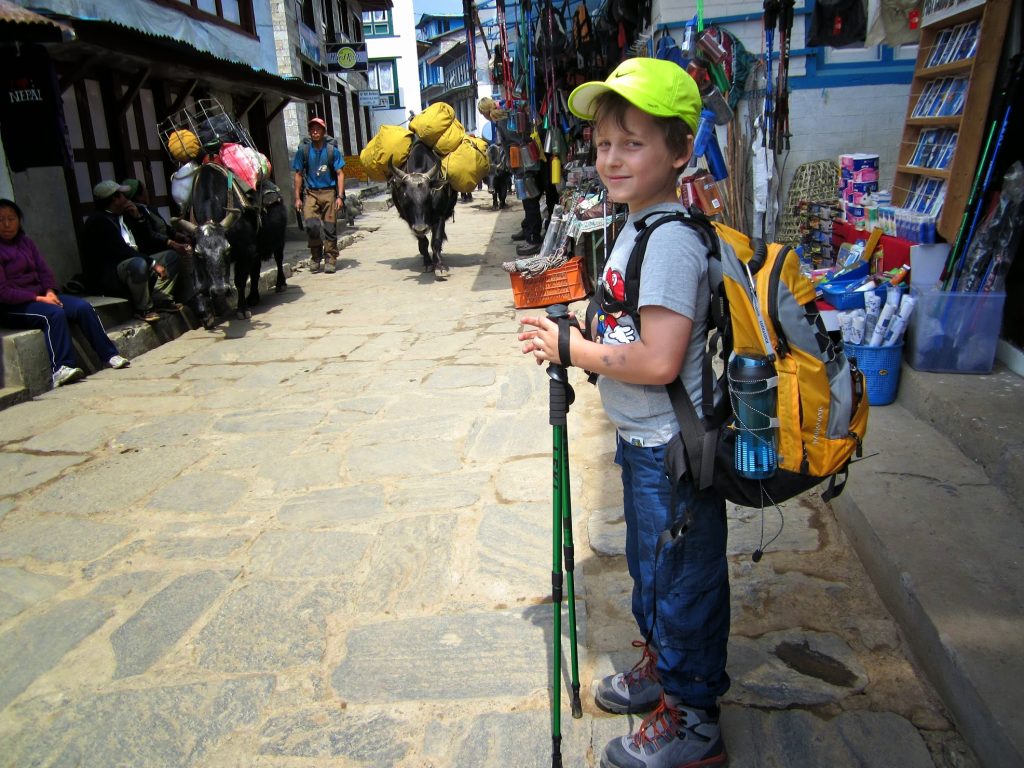
Things you can do that are not mentioned in the travel guides: Kathmandu 1. Kathmandu Zoo The Kathmandu zoo isn’t well known as some zoos in other countries, but you will be pleasantly surprised by how the animals appear pretty content and well looked after. If you go there on Saturdays (the weekly day off in Nepal), it can be busy with families with children and an excellent opportunity for your kids to interact with local children. If you go there during the weekdays, you might see some school children on their educational excursion. Most of the animals at the zoo are native to Nepal. Some include the langur, rhesus monkeys, four varieties of deer, leopards, the Royal Bengal tiger, and numerous birds. You can also hire a paddleboat and go rowing on the lake. You can opt for an elephant ride if you are not planning to visit Chitwan. Elephant rides are usually available after 1 pm as they are taken out in the morning to collect their food. It can be a bumpy but fun ride. 2. Patan Durbar Square You can take a short taxi to Patan Durbar square if your children are not exhausted after visiting the zoo. You can walk around the World Heritage site; have lunch or high tea there. You can make the stay as short or as long as your kids’ condition allows. 3. Rickshaw Ride in Thamel You can take a rickshaw ride through the narrow streets of old Ason to the Kathmandu Durbar Square from Thamel – the tourist district, and return for lunch, high tea, or dinner. It would be best if you fixed the price for the ride before you embark on it. 4. Buy colourful Tikas in a stand outside Thamel in Kathmandu. Pokhara and surrounding areas Pokhara is the adventure capital of Nepal. It is an ideal place to chill out or participate in adventurous activities. 5. Trekking in the Annapurna region. You can opt for a trek from a single day to a multi-day hiking adventure with your family. It is best to “invest” a bit more in a premium company for safety and the best experience for your family’s trekking holiday. Having a knowledgeable and caring trek leader/guide, porters can add value to your family vacation. The Annapurna region is an excellent choice as you can opt for a mid-altitude trek and not worry about Acute Mountain Sickness for your family. If your kids are too young, you can ask the trekking agency to provide extra porters to carry your kid/s when they get tired or bored. It is a great way to introduce your children to nature and bond as a family unit. Bring some games and playing cards to spend time both as a family and getting closer to your support team. There will be children from the village with whom your kids can become friends. Your family will cross some suspension bridges, which can be a lot of fun. Your children will probably love watching the numerous domesticated animals when you hike through villages, not forgetting the beautiful views of the Annapurna range on clear days. Having a first aid kit is suitable for your peace of mind. Simple things like having a hand sanitiser handy and drinking boiled and filtered water at all times can help prevent stomach ailments. In addition, it is advised to bring multi-vitamin snacks for an activity like trekking for your kids. 6. Eat Lemon Meringue at Moondance Restaurant, Pokhara Visitors to Nepal might have heard of Dal Bhat, the national staple diet which consists of rice, lentil soup with vegetables, and meat curry (mostly chicken and mutton) with spicy sauce. In addition, you will be pleased to find various international cuisine available in popular tourist hubs like Kathmandu, Pokhara, and Chitwan. The Moondance Restaurant in Pokhara is highly recommended. They have a selection of comfort food, gastronomical delights, and board and card games. Many more good restaurants in Pokhara serve various local and international cuisines. 7. Pony ride around the Lakeside in Pokhara The ponies might look tired and small compared to the bigger better-groomed horses in the West. It would be helpful if you could bring the ponies some treats like carrots or apples. However, the ponies are gentle, and their drivers are usually friendly. It is best to start from Halan Chowk and head towards the less busy Pame side. It is another suitable way to spend time around Phewa Lake. 8. Paragliding in Pokhara There are numerous paragliding companies in Pokhara. For the same price, why not fly with the company owned by two Nepalese guys who climbed Mount Everest, paraglide down to the Sun Koshi River, and kayaked to Bengal’s bay in 2011? They won the National Geography Adventurers of the year 2012. Their company is called Fly Himalaya. 9. A yoga course in Pokhara with the kids- warmly recommended. There are several yoga studios around Lakeside in Pokhara. You can easily walk into several and ask if they have a family program or for the kids. 10. Day hike near Pokhara If you opt not to go on a multi-day trek, you can go on a short easy hike to the village of Astham. There are several fantastic guesthouses there. If you are not on a tight budget, you can stay at an organic lodge on a Japanese/Nepalese joint venture. 11. Women’s cooperative shop Tara’s shop is part of an organisation that supports women workers, and you can visit this fair trade shop to help empower them. It is situated in front of the “Be Happy” restaurant. You can visit Tara’s shop in front of Be Happy restaurant in Lakeside. It’s an organisation that supports working women. See how they spin the strings, dye them, and make them into fabric they use to make all sorts of bags, gloves, stunning hats, etc. 12. Taste organic Honey Taste organic Honey from wildflowers that grow only at high altitudes or Butternut
8 Reasons To Explore The Great Outdoors
There are many reasons to explore the great outdoors, and for some, it’s even difficult not to, but with exploration comes excitement and new adventures. But maybe it doesn’t sound all that fun to you, perhaps you’re scared of nature, or maybe you don’t enjoy it that others do, which is fine, but there is a bonus if you will find yourself out there. Being in nature is natural to all humans; it’s so natural that humans made the word natural off of nature. Staying indoors is not so natural, at least staying indoors for prolonged periods without interacting with the sun. And our bodies don’t really like not having the sun or fresh air, among other things. But it does like nature, which is known because there are known benefits to going outside and exploring. Relieve Stress To start with science, cortisol is a hormone in the brain correlated to stress. So the more stressed you are, the more cortisol you have; logically, less cortisol equals less stress. And you can get less cortisol by going into nature, exploring, being relaxed, and enjoying nature because the forest is not stressful compared to your job or everyday life. Being less stressed can open many doors for you; being less stressed means that you are overall more patient and therefore have more time to think about decisions and think things through; it’ll make you more appreciative as you pause for a second rather than walking past all there is to see. Increase Mental Energy As mentioned, less stress is better for your body because it reduces your mental state. But going into nature relieves stress while rejuvenating your mental state, giving you more mental energy. So heal yourself by taking a waltz into your heart, allowing you to think more clearly and carry on easier. If you’re like most people, you can sometimes be overwhelmed or bored with the same old sights, the same old town or city, which is tiring, and you only become gradually more tired. This is why taking a trip to spend time in nature is a good thing because it will allow you to relax fully and make you happier in the long term. Boost Your Immune System The two points have been about mental health, which can be different for everyone, either stronger or weaker, more susceptible to mental fatigue, and the like. But this one works for everyone, albeit on different levels but still. In addition, being in nature boosts your immune system, allowing you to fight off any pathogen more effectively, and you’ll be less sick with the common cold, which is always a benefit. This is due to phytoncides, or at the very least, scientists believe. There’s strong evidence to suggest that being in nature boosts your immune system, but no one is exactly certain as to why. But phytoncides could be it, which are the airborne chemicals that plants emit, which increase the count of white blood cells, cells which fight off disease.
Juphal to Jomson Trek Upper Dolpo Traverse
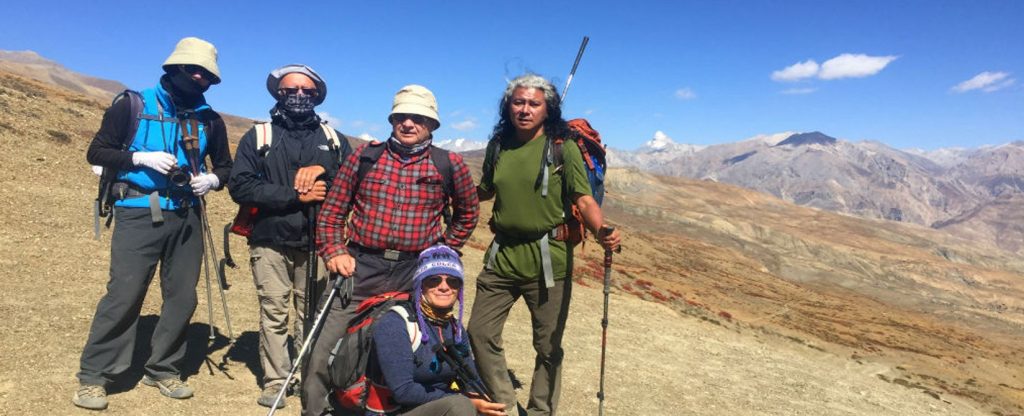
Upper Dolpo Traverse – Juphal to Jomsom September/October 2017 The trek was finally confirmed after months of correspondence back and forth in August. We had our first ever Polish group consisting of 5 members. Trekking Staff movement – Pre trek. This trek is in the High and Wild part of Nepal and takes a lot of planning. I had been planning for weeks on end. Our staff, who spend most of summer monsoon trekking in Ladakh, got back five days, and Dil got into Kathmandu one night before leaving for Dunai, Dolpo district’s administrative centre. These poor lads had to take four days’ drive, changing four vehicles as there are no bridges over the swollen rivers, porter the gear and food to the other side, load it onto another transport, and continue their bumpy ride. After four days of the hot, sticky, rough, and sometimes bruising ride, they had to load the equipment and food on mules and continue their journey on foot for two days. They finally got the Dunai on the 6th day. They still had to sort out the rental tents and kitchen equipment and go shopping for fresh vegetables before we arrived. Upper Dolpo Group movement One group member pulled out due to compassionate reasons on the day she was to fly towards Nepal. One group member arrived via Delhi in the morning, while the rest arrived via Doha. Upon arrival at the hotel, the standard check-in, I arranged for the money changer to come to the reception area with local currency for the trekkers as part of our service. We parted ways after agreeing to meet the following evening for dinner and updates. They were left on their own as they all had been to Kathmandu at least twice before, and they knew their way around town. We met for dinner at an agreed time, the trekkers got briefed on the program for the next day, and we flew to Nepalgunj in the afternoon. The flight to Nepalgunj got delayed by 30 minutes, but a brand new old ATR72-500 of Yeti Airlines made up for the lost time. The aircraft was filled with two big groups of medical/missionary volunteers to the Humla district. It was hectic trying to retrieve our luggage while being eaten alive by mosquitoes. The heat and the humidity didn’t help much. It was a relief to get to our hotel’s air-conditioning – Traveler’s Village, just a few kilometres from the airport. We retired early, as we had to get to the airport by 5.30 a.m. for our flight to Juphal. We collected our packed breakfasts, loaded the vehicle with our luggage, and headed for the airport. The airport was buzzing with activity. Upon checking in, I was informed that we had 74 kilograms of excess weight and had to pay RS150 per kg. Upon doing so, I joined the group after the security check, and the weather had worsened; it had started raining. We were informed that the flight was cancelled due to bad weather at Juphal. The airline crew we had booked our plane had a day off the next day, and they wouldn’t fly. I called up contacts to convince them to pass the next day or get seats on another airline but to no avail. We were fortunate to have understanding clients who said there was no need to get stressed out if the flights were not happening. We spent the next day touring around Nepalgunj; mind you, most locals we spoke to said not much to see here. We returned to the hotel in the afternoon after sending the morning in an electric vehicle. Day 1 The following day we got into our aircraft, and in a short time, we landed at Juphal airport. We decided to walk part of the way until our vehicle met us on the trail; we walked to Dunai. We expected the weather to be much colder above 2000 meters, but it was still scorching. We were glad to be united with our team, who had been waiting for us and had a quick discussion to get moving that day after a quick lunch. Our group consisted of me as the trek leader, two trekking chefs, one trek butler, one local assistant, two pony men, and ten mules. We started along the Thulo Bheri River and turned northward an hour later along the Suligad River. We registered with the Shy Phoksundo National park at their entrance, the largest in Nepal. We got to Kageni just before dark as we had a late start to the day. Our crew and mules reached the campsite 30 minutes after we did, and they quickly set up the tents for the trekkers and made dinner within 90 minutes of our arrival. Day 2 The following day we walked in a northwesterly direction going upstream of the Suligad river, which comes from Phoksundo Lake. The hike was in the beautiful forested area passing through Shyanta and Chepka until our final stop at Rechi. Our mules and support crew got delayed as one of our mules brushed against a rocky outcrop on the trail and fell into the Suligad River. Our pony men quickly jumped into the waist-deep river and pulled the mule out. The mule escaped with no injuries; its load, two tin boxes, was utterly smashed. Once again, they arrived just before dark, but like the previous night, our team was swift in preparing our dinner, and everyone went to bed content.
Travel Guide to Leh and Ladakh
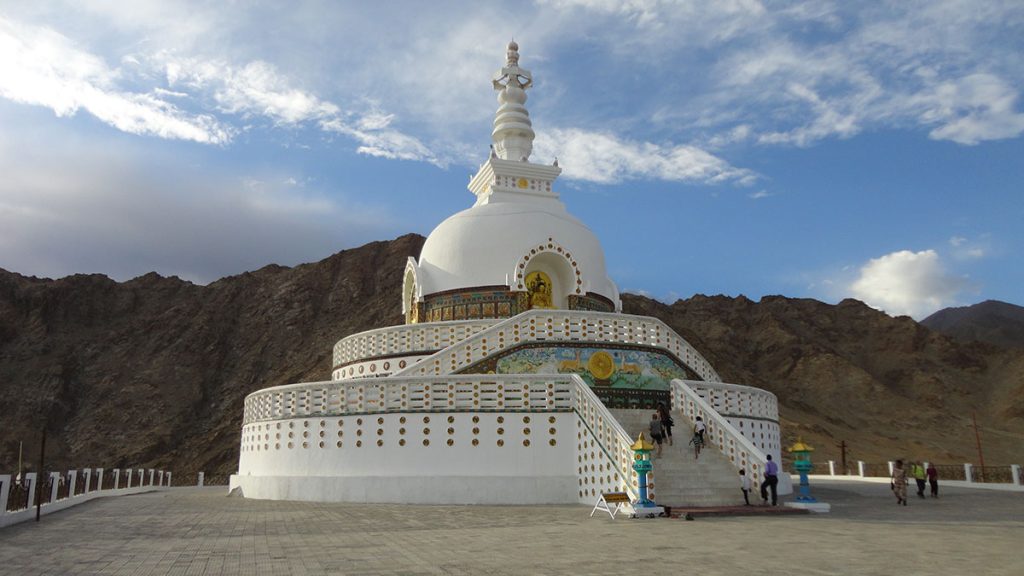
Travel Guide to Leh and Ladakh In India’s northernmost tip, Ladakh, near the Indus Valley, lies at Leh at 3,500 meters above sea level. Leh, a remote town, has become a popular tourist destination since it was opened to foreigners in 1974. It is gorgeous and one of the standard entry points to the Ladakh region. Bordered by two of the world’s most extensive mountain ranges and surrounded by high-altitude desert. Leh’s dry, arid landscape is full of historic Buddhist monasteries, making it an incredible sight to watch. Getting There Several flights operate to Leh from Delhi regularly. There are also flights to Leh from Srinagar and Jammu. In addition, two highways connect Leh for a few short summer months when the snow has melted on the high passes. Each year the highway from Srinagar to Leh is open from Late May to November, and the Manali-Leh road is open from June to October. Bus, Jeep, and taxi services are available for the overland journey. The overland trips take a relatively comfortable two days or a long journey of 18 hours driving on the challenging terrain. If you are in good health and not in a rush, the overland journey must, at least once in your life, enjoy the stunning scenery. Best time to Go The best time to visit Ladakh is between May and September, when the temperatures are at their warmest. Ladakh is in the rain shadow, and it is not supposed to rain there like most places in the Indian Subcontinent experience. However, due to climate change, it started to rain more than 15 years ago, and occasionally there have been rare flash floods, which were quite catastrophic. Attractions and Places to Visit Ladakh’s Buddhist monasteries and historical monuments are the biggest attractions for travellers. The Shanti (peace) Stupa, just outside the centre, is one of the monuments that stand out in Leh. The 800-year-old Spituk Monastery, known as the Kali Mandir to the Hindus, houses a fascinating collection of masks. One can stop to spin a large prayer wheel over there. The imposing 17th-century Leh Palace was modelled after the Potala Palace in Lhasprovides, a captivating town view. Thikse Monastery, which lies southeast of Leh, is the place to witness amazing sunsets. The Hemis Monastery is Ladakh’s oldest, wealthiest, and most influential monastery. Festivals in Ladakh The Ladakh Festival is held for the first two weeks of September. The opening ceremony is a spectacular procession through the streets of Leh. Villagers wear traditional costumes, dance, and sing local folk songs backed by an orchestra. The festival also showcases musical concerts; Buddhist monks perform mock wedding ceremonies and masked dances. One of the most popular Hemis Festivals takes place during June / July, Tantric Buddhism’s birthday in Tibet – Guru Padmasambhava. The festival contains colourful handicrafts for sale, colourful masked dances, and traditional music. The Hemis Festival takes place for two days. Adventure Activities Ladakh Nature lovers and adventurers will find a new and exciting opportunity to paraglide around Leh. Trekking has been a long-standing outdoor adventure activity in Ladakh. There are trekking options such as the Sham Trek for beginners and more extended trekking tours such as the Lamayuru to Alchi, the ever-famous Markha valley trek, and numerous treks two to three weeks long. Here is a list of some of the best treks in Ladakh. Those who seek more adrenaline rush can opt for mountaineering trips to either Goleb Khangri, Stok Khangri, or Khangyatse. Whitewater rafting is another outdoor activity done during July and August on the Indus River in the Leh area and the Shayok River in the Nubra Valley. The Zanskar River in Zanskar. In addition, one can partake in a camel safari in The Nubra Valley, as well. Trips outside of Leh One of the most impressive short side trips outside of Leh is the journey toward the Zanskar River. You can see hanging glaciers, the oasis of green villages amidst the arid landscape, Buddhist monasteries, and Himalayan peaks. The Nubra Valley, via Khardung La pass, is another unforgettable trip. The Indians love to claim the road to Khardung La as the “highest motorable road in the world”; if you did not know it already – https://jalopnik.com/the-worlds-ten-highest-roads-1561766761. Nubra Valley’s trip is rewarding with the beautiful streams, rivers, grazing yaks, ponies, dunes, and the Bactrian Camels. Required Permit Foreigners need to get a protected area permit (PAP); this can be obtained through licensed travel agents in Leh. No Permits are required for local sightseeing around Leh, Zanskar, or the Suru Valley. Places to Stay Changspa, once a backpacker hub, has a combination of guest houses and upmarket hotels. There are a growing number of homestays in this area. It is just a short walk from the central Bazaar area. There are also many restaurants with charismatic gardens to chill out in. This area is a favourite place for homestays. On Fort Road, Padma Guesthouse and Hotel has rooms for all budgets and a fabulous rooftop restaurant. The Spic n Span Hotel on Old Leh Road, close to the main town centre, is an excellent hotel with modern amenities, and room prices start from around 5,000 rupees per night. The Hotel City Palace is well recommended. Room rates start from 5,000 rupees per night for a double. When on a trek, an excellent option available on some trekking routes is to go for homestays rather than camping. It gives you a delightful experience of staying with a Ladakhi family, sampling local food, and mingling with other trekkers if you do not mind the company of others. Some of these areas have initiatives to enhance the livelihoods of the villagers you visit or stay with. Travel Tips Give yourself enough time to acclimatize to altitude after arriving in Leh, especially if you fly in. Keep exertion to a minimum for the first day or two. Increase water consumption to avoid confusion between Acute Mountain Sickness and dehydration. Electronic devices’ batteries drain in that kind
Bhutan Tourism Facts
Bhutan Tourism Facts The Government of Bhutan allowed tourism to begin in 1974 to promote its unique culture and traditions and raise revenue in the otherwise isolated Kingdom. Bhutan government’s slogan for tourism is “Low Volume, High Quality.” Two hundred eighty-seven tourists visited Bhutan in the first year. Tourist arrivals increased steadily to 2850 in 1992, and up to 7158 in 1999. These days the number of visitors to Bhutan is around 80,000. Tourism is a massive contributor to the Bhutanese Government’s coiffeur and one of the biggest employers. However, the government is profoundly aware of tourism’s effect on the environment, unspoiled landscape, and tourists’ unique culture. Therefore, they have restricted the level of tourist activity from the start, preferring higher quality tourism. Bhutan Tourism Corporation Limited (BTCL), and quasi-autonomous and self-financing body, implemented the government’s tourism policy until 1991. The Bhutanese government privatized BTCL in October 1991. These days more than 800-registered travel companies are operating in Bhutan. All individuals or groups must travel on a pre-planned, prepaid, guided package tour in Bhutan. Most foreigners aren’t allowed to go independently in the Kingdom. The arrangements must be made through a government-registered travel company or an overseas tour operator. The most important tourism centres are in the capital Thimpu, Paro’s western city, where the only international airport is located in the Kingdom. Taktsang, also called the “Tiger’s Nest,” is a monastery on a Cliffside overlooking the Paro Valley. This is an incredibly sacred temple to Buddhists. A Buddhist deity is housed in a cave in the Temple. It is believed this Deity introduced Buddhism to Bhutan and fasted for 90 days while fighting the demons that inhabited this valley to spread Buddhism. This impressive Temple has stood for more than a millennia despite two fires (the repaired damages). Punakha Dzong (fort) is another important site to visit. It is the second-largest Dzong in Bhutan and is still a significant ceremonial venue for the Royal family. For example, the current king’s coronation and wedding took place here. Druk Air, the National Carrier, and Bhutan Airlines (private airlines) operate flights in and out of Bhutan. The current minimum daily package includes the following: 1) A minimum of 3-star accommodations – you can upgrade to 4 and five stars for an additional charge. 2) A licensed Bhutanese tour guide for the period of your tour package. 3) All transportation by road (excludes domestic flights), if you are also trekking – camping equipment and portage of all gears and food during the trekking period. 4) It includes all permits, entrance fees, and meals – breakfast, lunch, and dinner. The minimum daily package cost for tourists travelling in a group of 3 or more during the low season months of January, February, June, July, August, and December is US$200 per person per night. The minimum daily package rate for tourists visiting in a group of 3 or more during the high season months of March, April, September, October, and November is US$250 per night per person. If you are a single traveller, the government charges an additional F.I.T. surcharge of US$40 per night. If there are two of you, you need to pay an additional US$30 per night of your Bhutan tour. The Royal Government of Bhutan sets minimum selling prices for packages to Bhutan. These must be paid in U.S. dollars before arrival in Bhutan. Cancellation Would you please discuss the cancellation policy with your service provider (tour operator)? All Bhutan Tours are prepaid, so you’ll only need money for drinks, laundry, souvenirs, and tips; for this, it is best to bring cash. A.T.M.s are available in most main towns. However, it would be wise not to rely entirely on being able to use plastic. Credit cards are accepted in some hotels and souvenir shops, but only in major cities or “tourist” areas. The currency unit is the Ngultrum (Nu), which is pegged to the Indian rupee. The Ngultrum is further divided into 100 chetrums. Indian rupees are used freely all over Bhutan (don’t be surprised if you get the change in rupees). Officially 500 and 1000 Indian rupee notes are not accepted due to large counterfeit bills. It is OK with the Bhutanese to bring a reasonable amount of Indian currency into Bhutan, though Indian regulations prohibit currency export. Check out our Trekking packages for Nepal, Bhutan, India, and Tibet.
Best Things to do in Sikkim
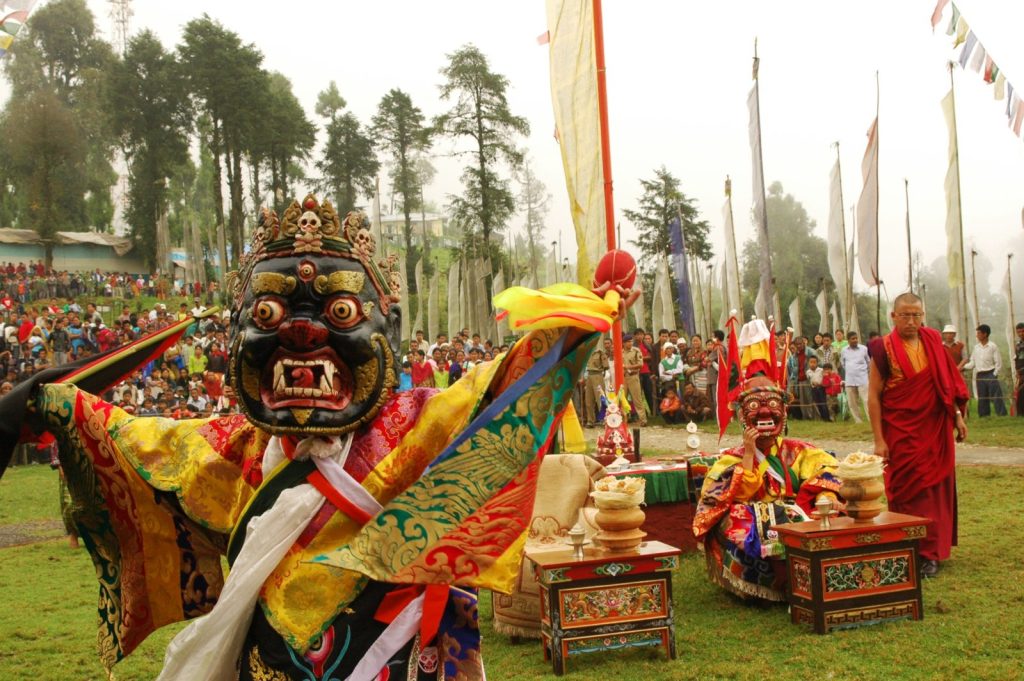
The Top Things to do in Sikkim Nature has given Sikkim lush forested hills, snow-clad Himalayan peaks, deep valleys with raging rivers, and fresh air. The top activities in Sikkim include shopping, sightseeing, whitewater rafting, paragliding, and trekking. It is distant from metropolitan cities’ complications, making this Himalayan state a fascinating place to visit. These are the activities worth considering to make the most of your travel to Sikkim. Cable Car Ride Gangtok A ride in the Gangtok cable car is one of the fun things to do in Sikkim. Enjoy the picturesque scenery from onboard the Gondola. The 1km cable ride begins at Deorali Bazaar near the Institute of Tibetology and goes on to Tashiling, net to the Secretariat. On clear days one gets to admire Mount Kanchenjunga and Gangtok town from the height of 3500 m. The cable car operates from 8 am to 4.30 pm for a small fee. Rumtek-Monastery The Rumtek monastery is one of the most popular attractions of Sikkim. It is located 24 km from the city of Gangtok at an altitude of 6000 feet. This monastery is of the Kagyu sect of Tibetan Buddhism. The Kagyu sect is one of the six primary schools of thought of Tibetan Buddhism. It originated in Tibet in the 12th century. The Rumtek monastery is also known as the centre for Dharma Chakra. The previous incarnation of Karmapa used to reside here before being reincarnated in Tibet. The relics from the Tsurphu monastery are used to decorate Rumtek. Two important festivals take place here every summer and winter. You can enjoy a peaceful walk around the vicinity while enjoying the rich history, culture, and spiritual bliss. Yak Ride Riding a Yak is one unique experience in Sikkim. The animal is an inhabitant of the harsh climate and inaccessible terrain. The Yaks for riding are tamed and pretty well-groomed for tourists. They are decorated with colourful woollen knitwear over their horns, foreheads, and bells tied on their necks. It can be a thrilling ride that comes with a memory to last you a lifetime. The Yaks are available for riding during the busy tourist season from March to May and September to December. Yak rides are possible in Dzongri and Tsomgo Lake areas. Nightlife in Sikkim You might not have heard of Sikkim as a place to party. It is one of the Indian states where alcohol is tax-free, making it inexpensive. Gangtok is a favourite place to spend evenings. There are numerous options for a night out in Gangtok, including multiple bars, pubs with live bands, Karaoke bars, nightclubs, and even casinos. Sikkim is the only state in India that has in-land casinos. The other casinos in India are in boats where you are taken offshore for gambling. The mountain state’s local drinks are Chiang, Tongba, and Rakshi, which can be tempting and inexpensive. Dining out is another fun thing to do in Gangtok. Again, you can go for some international fare or try out local delights.
The top things to do in Darjeeling
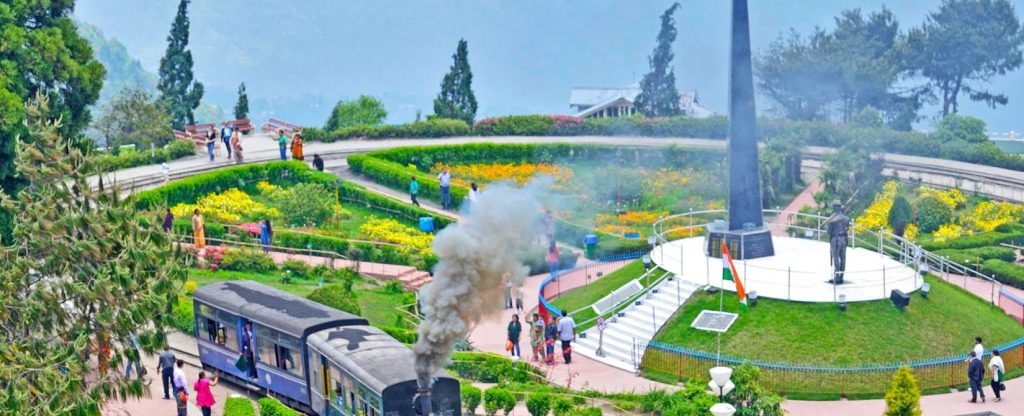
The Top Things to Do in Darjeeling Darjeeling is the favourite hill station in West Bengal. It is an excellent introduction to the North Eastern Himalayas. It is ideal for families, honeymoon couples, nature lovers, and adventure enthusiasts. Here is a list of top things to do in Darjeeling when you visit this picturesque hill town. Staying at a Tea Garden Going on a tea garden tour is not a new idea for Darjeeling. The hill station has been renowned for its numerous tea gardens since the British era. Darjeeling is sometimes hailed as the “Pilgrimage site for tea lovers,” with some 80 tea gardens still operational. The lush gardens that sprawl across thousands of acres are famous attractions for Darjeeling’s visitors. The brand Darjeeling alone is associated with top-quality tea around the world. You can plan to stay at one of the tea gardens rather than just visiting one for a few hours. There are some pretty comfortable lodgings at various tea estates. Some of them have been well maintained since the Colonial era. You can choose from a modest bungalow to a gran Mansion from the British Raj. The experience of staying at a Tea Garden can give you a lifelong memory, set away from the cities’ chaos in a peaceful surrounding. Tiger Hill: Tiger Hill is a popular tourist attraction in Darjeeling. It is a beautiful viewpoint on clear mornings for one of the most stunning sunrises in the Himalayas, with Mount Kanchenjunga, the third-highest peak being the main show-stealer. Most tourists come here early with the hope of catching the first rays of the sun as it hits Kanchenjunga and the numerous snowy peaks around it. However, other 8000-meter mountains such as Mount Makalu, Lhotse, and even Everest can be seen from Tiger Hill on very clear days. Padmaja Naidu Zoological Park The Padmaja Zoo in Darjeeling is an institution dedicated to the conservation of endangered species of Himalayan wildlife. Visitors often leave in awe after seeing the exotic wildlife of the Himalayas. The zoological garden is built on a hilly landscape to depict the natural habitat for the fauna. Look out for the beautiful clouded leopard, snow leopards, Siberian tigers, other big cats, sloth bears, Himalayan black bears, red pandas, and Tibetan wolves. The natural settings help the animals exist with ease. The Padmaja Naidu Zoological Park runs a very successful breeding of Himalayan tahr, blue sheep, Himalayan Monal, Himalayan salamander, red pandas, and grey peacock pheasant, satyr tragopan, and blood pheasant. In addition, the zoo is renowned for its conservation breeding programs of the red panda, Himalayan salamander, Tibetan wolf, and snow leopard. Set within the same compound of the zoo is the Himalayan Mountaineering Institute. It is a centre that trains outdoor and mountaineering courses. In addition, there is a mountaineering museum. The admission ticket covers both attractions. Both remain open daily from 8 am to 4 pm. The Himalayan Mountaineering Institute (HMI) The Himalayan Mountaineering Institute is almost a shrine for many mountaineering aficionados. The HMI conducts mountaineering and adventure courses several times a year. The Himalayan Mountaineering Institute was established in honour of two famous mountaineers, Tenzing Norgay and Sir Edmund Hillary, after Everest’s summit in 1953. The HMI museum has a vast collection of climbing gear and equipment types from the bygone era, bringing the visitor much nostalgia. It is an excellent place to visit and can combine with a visit to the Padmaja Naidu Zoo. Explore colonial connections The British Colonialists chose to reside in Darjeeling because of the similarities with the climate back home, with a bonus of the scenic beauty. Many buildings standstill from the British Raj. Some classical structures from the 19th century are the Capitol Building, The Immaculate Conception Church, the Windermere hotel, and the Glenburn Tea Estate. These beautiful buildings remind both residents and visitors of the colonial days. One can enjoy a luxury stay at the Windemere Hotel and the Glenburn Tea Estate with the bygone era’s nostalgia. Toy Train Ride. Darjeeling is well known for its tea, scenic beauty, and impressive mountain railway. This narrow-gauge railway is a marvel of engineering and a UNESCO World Heritage Site. The railway is also called “Toy Train,” and riding the “Toy Train” is on the list of things to do while in Darjeeling. A ride to Ghoom and back takes half a day. The train fare is INR 360, which includes the entrance to the train museum at Ghoom. Ghoom Monastery Darjeeling had a longstanding trade connection with Tibet. Many Tibetans took refuge in Darjeeling in 1959 after the mass exodus from Tibet. India has since become an important centre for Tibetans. The Tibetan Self-Help Center has become a vital hub for the Tibetan community. Visit the centre to learn about their history and support them by purchasing their beautiful arts and crafts. The ornate Buddhist monasteries of Darjeeling are worth visiting. Some of the not to be missed Monasteries are the Bhutia Busty Gompa, which also happens to be the home to the original copy of “The Tibetan book of the dead.” The Ghoom Batasia monasteries are two other monasteries not to be missed. These monasteries are in a lovely setting, with Mount Kanchenjunga towering over them and the Darjeeling town. Tibetan Refugee Self-Help Center The Self Help Center is an excellent place to check out the lives of Tibetans in exile. In addition, one can admire the artisans’ skills in making jewellery, handicrafts, metal-work, Thangka paintings, carpet weaving, etcetera. The Tibetan Refugee Self-Help Center in Darjeeling is one place to check the Tibetans’ lives in exile. At the Tibetan centre, explore some intricate work by the skilful artisans. Moreover, it is one of the best places to buy souvenirs while helping the refugees to sustain themselves by this means. Mahakal Temple, Darjeeling The Darjeeling Observatory hill is a great location to enjoy the delightful views of the valleys. It is a short hike from town. You can get away for a few


